British vs Spanish Bluebells – How to Tell the Difference
2nd May 2025

Spring brings a sea of colour to our woodlands, gardens and wild spaces, carpets of beautiful bluebells spreading under awakening trees. But did you know not all bluebells are the same? How can we tell the difference between our cherished British bluebell and its European cousin, the Spanish bluebell?
I began asking this myself when bluebells started appearing in my own garden. I’d never planted any, yet they were multiplying year after year. On closer inspection, I noticed they didn’t all look the same, and so began my journey into the world of bluebell identification.
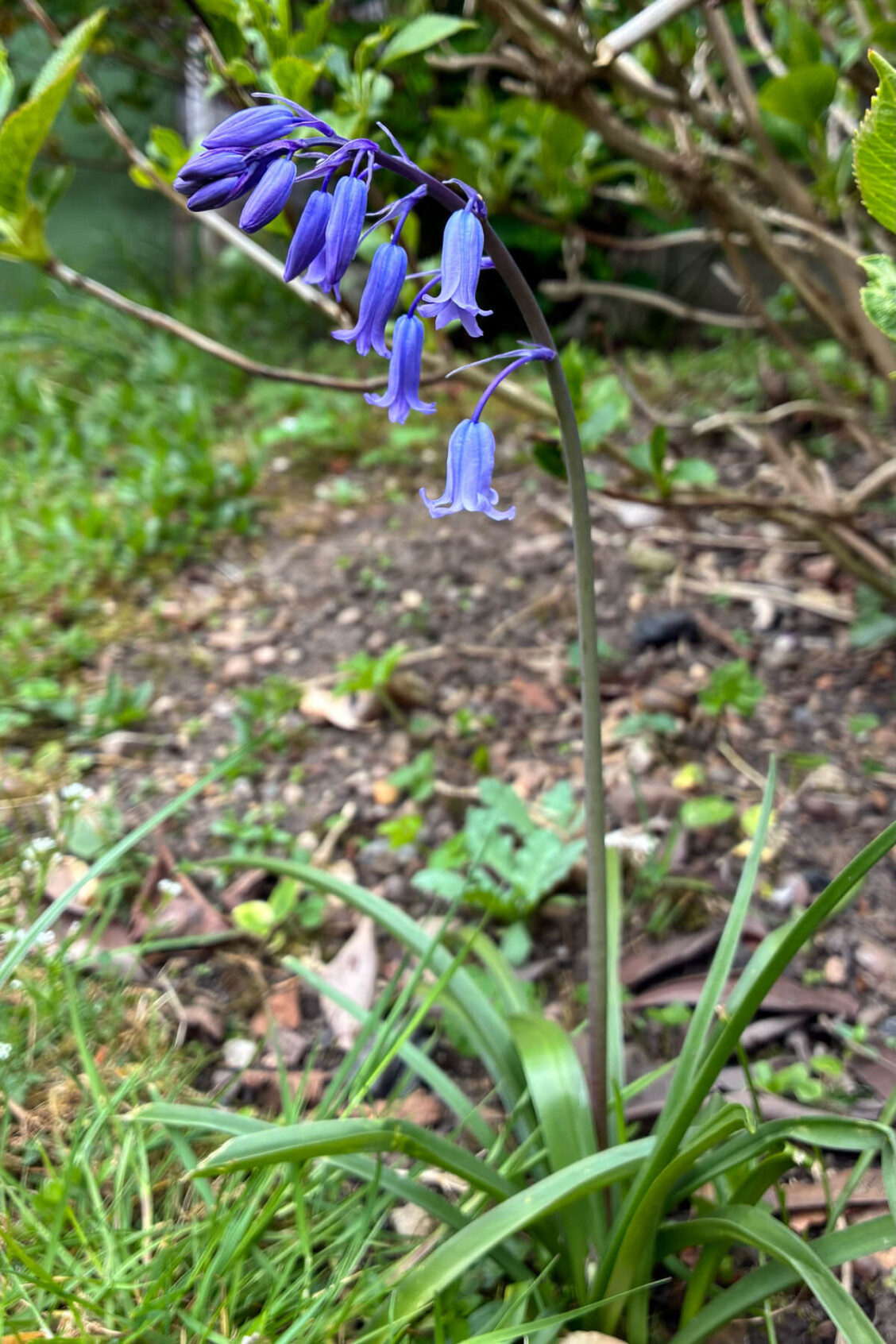
I’m no expert but I think this is a British Bluebell in my garden
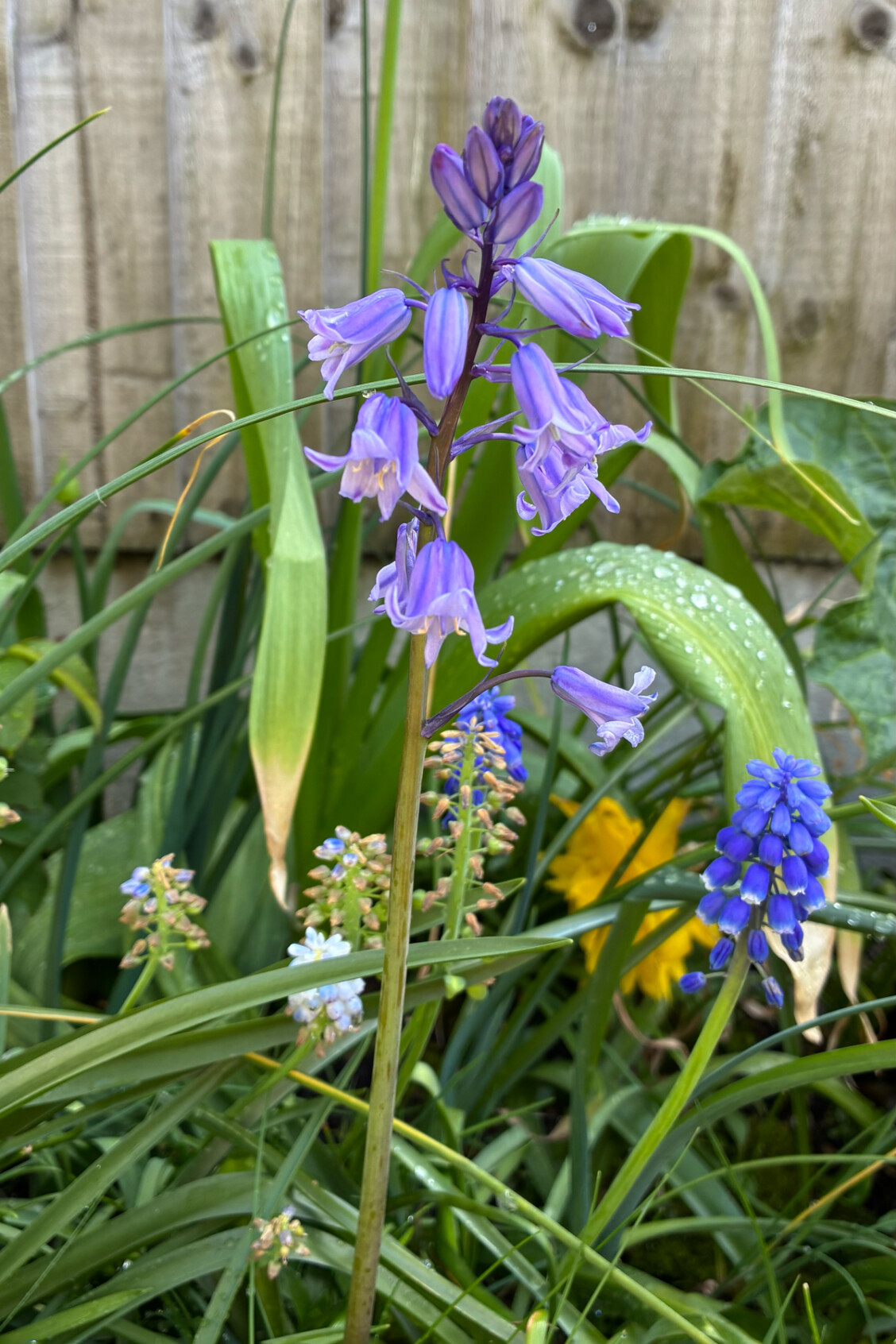
From studying I think this is a Spanish Bluebell
British Bluebell
(Hyacinthoides non-scripta)
Also known as the English bluebell, Native Bluebell, Common Bluebell, Wild Hyacinth, Wood Bell, or even Fairy Flower, the British bluebell is a beloved native species. You’ll most often see them blooming in April and May, especially in woodlands and old gardens, where they gather in thick, violet-blue drifts.
These early spring flowers take advantage of the light before tree canopies fully leaf out. They’re so treasured in the UK that they’re protected under the Wildlife and Countryside Act 1981. It’s illegal to pick or dig them up from the wild, and important to avoid trampling them. So please try to keep excited dogs and small children from wandering off the path, as damaged bulbs can take years to recover.
How to identify a British bluebell:
-
Colour: Deep violet-blue
-
Shape: Narrow, tubular bells with tips that curl back
-
Flowers: All on one side of a drooping stem
-
Leaves: Narrow (1–1.5cm wide)
-
Scent: Sweet and delicate
-
Pollen: Cream-coloured
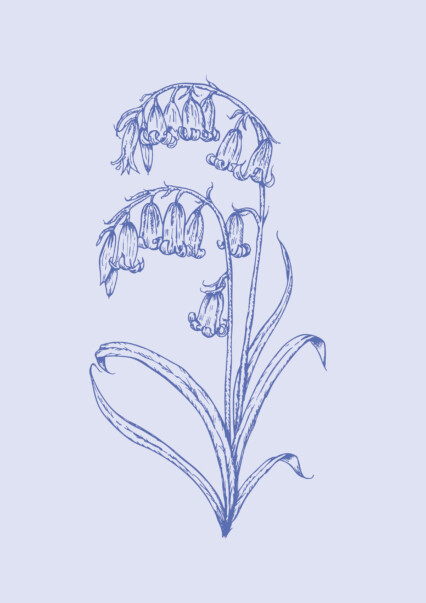
Spanish Bluebell
(Hyacinthoides hispanica)
The Spanish bluebell isn’t native to the UK. Spanish bluebell originates from Spain, Portugal and North Africa and was introduced to the UK as a garden plant in the 17th century. The first record of Spanish bluebells escaping into the wild dates back to 1909, likely through discarded bulbs or cross-pollination.
Today, you’ll often see Spanish Bluebells in gardens, along roadsides, and even in woodlands, growing alongside our native bluebells. This can cause a problem and a threat to our native variety as hybrids can develop, but I will tell you more about that in a moment.
How to identify a Spanish bluebell:
-
Colour: Pale blue, pink, or white
-
Shape: Open, bell-like flowers
-
Flowers: Grow all around a straight, upright stem
-
Leaves: Broad (around 3cm wide)
-
Scent: None
-
Pollen: Blue or pale green
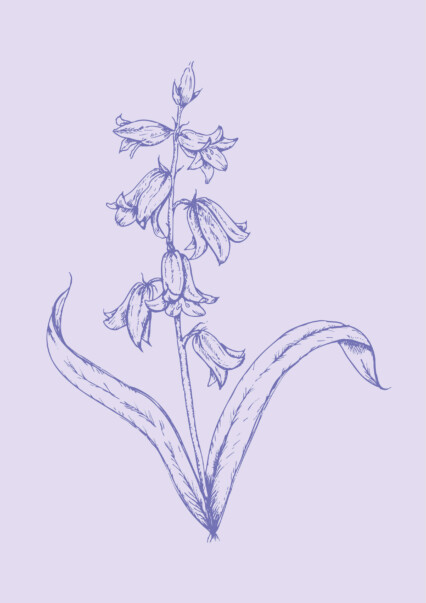
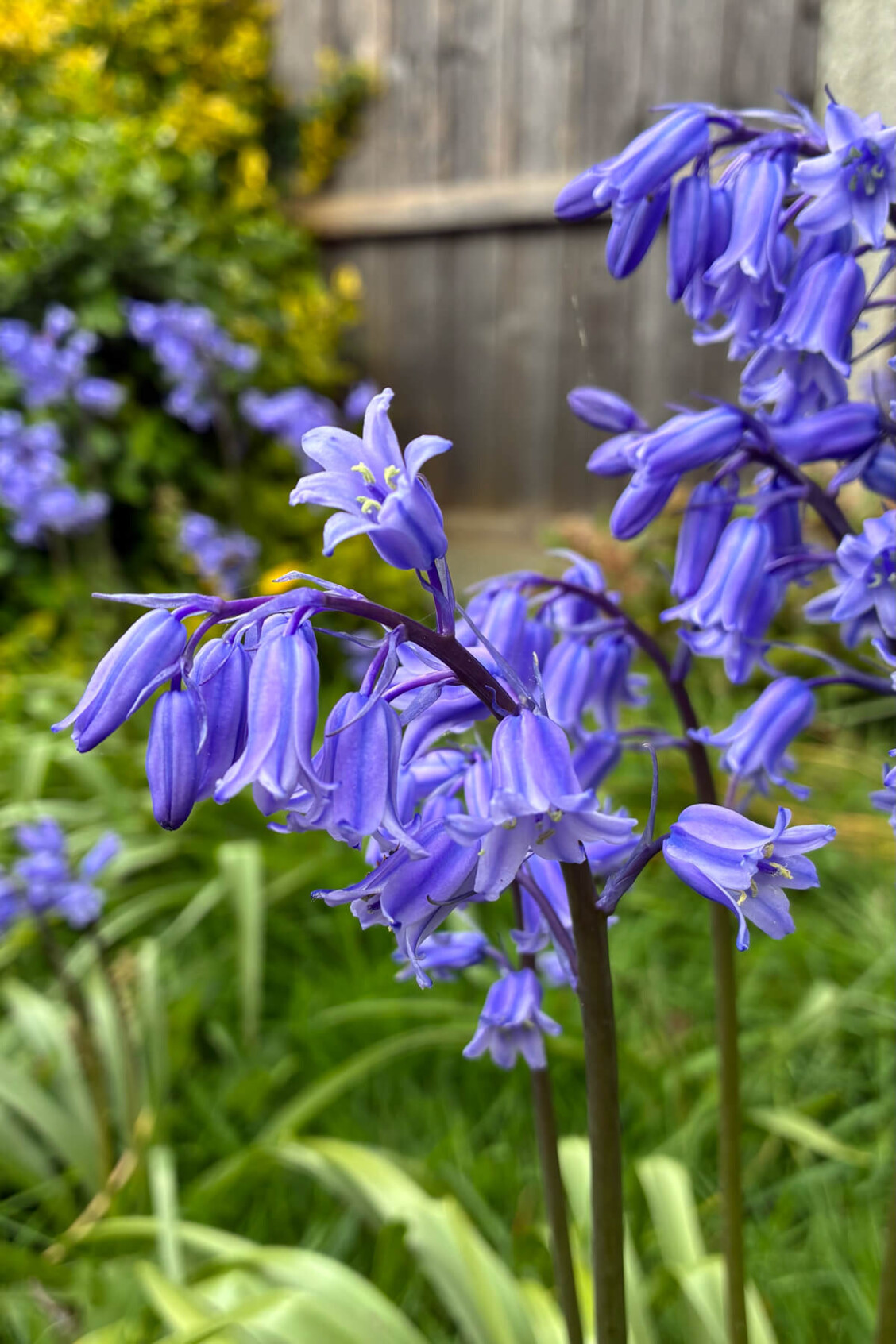
A hybrid Spanish and British Bluebell in my garden
What About Bluebell Hybrids?
Here’s where things get interesting, and I spent a while scratching my head trying to identify what bluebells were growing. In my garden, I found both types and a few that seemed to be somewhere in between. These, it turns out, are hybrids: a cross between the British and Spanish bluebell.
Hybrids are becoming increasingly common, especially in urban and suburban areas. While they may look lovely, they do pose a threat to native bluebells. Spanish bluebells and their hybrids are more vigorous and can outcompete native species for resources. Their spread more easily, especially in the wild, can weaken the genetic integrity of our native population. As the new hybrid starts to take on features of both the British and Spanish Bluebells.
The UK is home to nearly 50% of the world’s bluebells. This makes protecting our native varieties all the more important. While Spanish and hybrid bluebells aren’t currently listed as invasive species in England and Wales, it is advised against planting them if you live near native bluebell colonies, for example, in nearby woodland. This can help prevent accidental hybridisation, which poses a serious threat to our native bluebell populations. If you are thinking about planting bluebells in your garden, opt for native British bluebells and dispose of non-natives responsibly.
In Northern Ireland and the Republic of Ireland, Hyacinthoides hispanica is officially classified as an invasive non-native species, and it’s an offence to plant or encourage it to grow in the wild. In Scotland, it is also illegal to plant any non-native species in the wild.
So, in my garden with a variety of types, I will need to reassess the situation to encourage more of the British Bluebell and less of the hybrid and Spanish varieties.
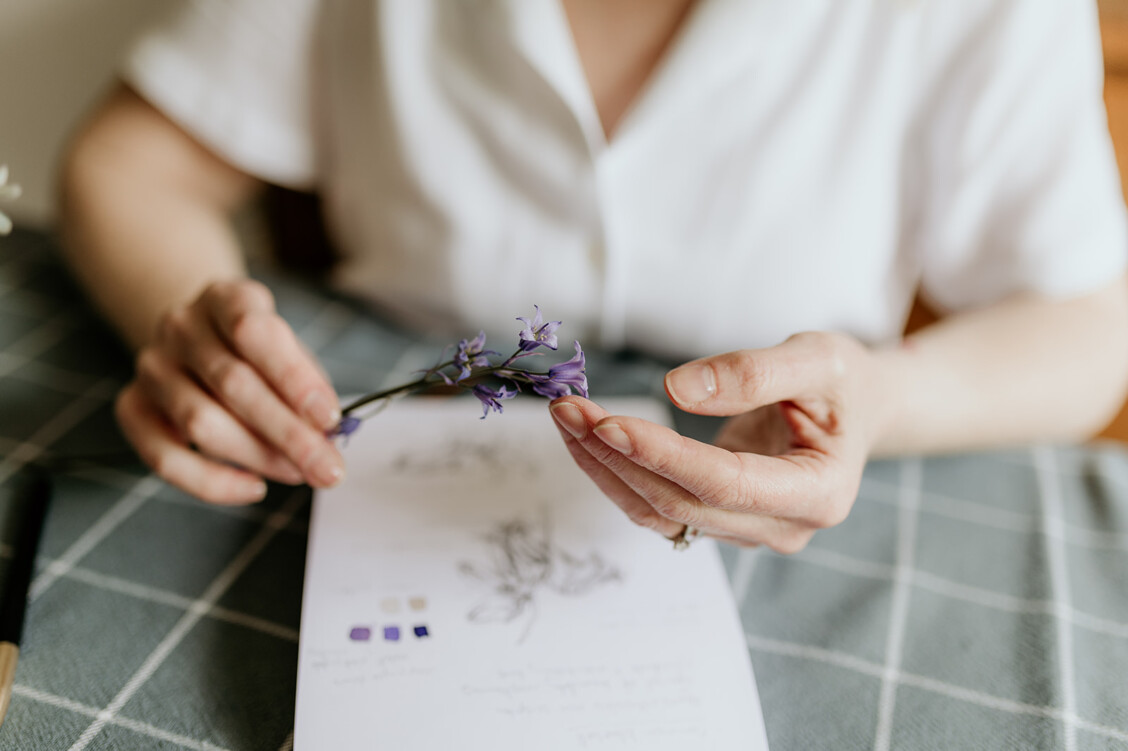
The Floriography of Bluebells
As always, I couldn’t resist diving into the symbolic meaning of these lovely blooms and like most flowers they can carry a variety of meanings depending on the source.
In the language of flowers, bluebells can carry messages of:
- Everlasting love
-
Constancy
-
Humility
-
Kindness
-
Solitude
-
Gratitude
-
Delicacy
-
Faithfulness
-
Good luck
The soft fragrance of the native bluebell has long been a favourite in British perfumery, and its shy, nodding posture has come to symbolise quiet grace and loyalty.
Other known facts are that Bluebells are dedicated to England’s Patron Saint, St George and the root sap was used to glue feathers onto arrows in the Middle Ages and to stiffen ruffs in Tudor times.
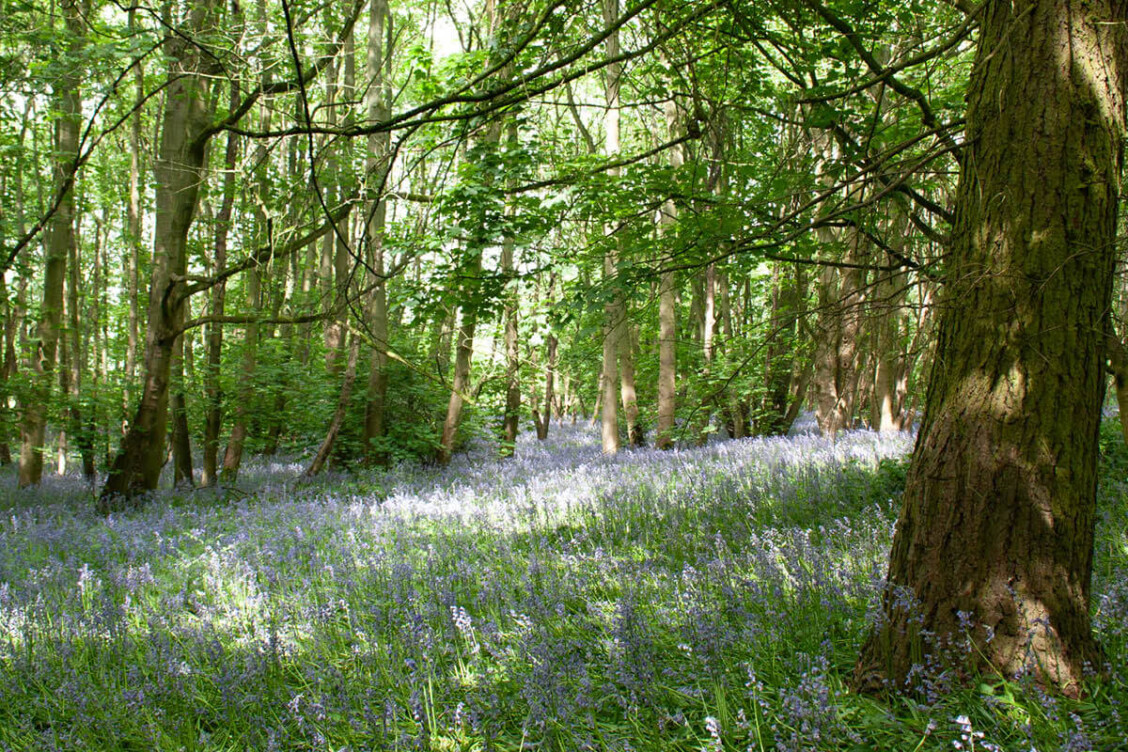
More Than Just a Wildflower
I adore the quiet magic of discovering plants like bluebells, whether in a shaded woodland or my own garden. Learning their names, spotting subtle differences, uncovering their stories… It’s a gentle kind of wonder that asks us to slow down and notice. In a busy world, nature offers us moments of pause, beauty, and connection. It reminds us of who we are and where we come from.
If you’re drawn to the quiet wonder of wildflowers, too, and love the idea of art and design that carries these stories forward, why not stay in touch?
Join my newsletter ‘The Botanical Blueprint‘ for more nature musings, botanical insights, and behind-the-scenes glimpses into my creative work. Or get in touch if you’d love a custom illustration inspired by the wild places you hold dear.
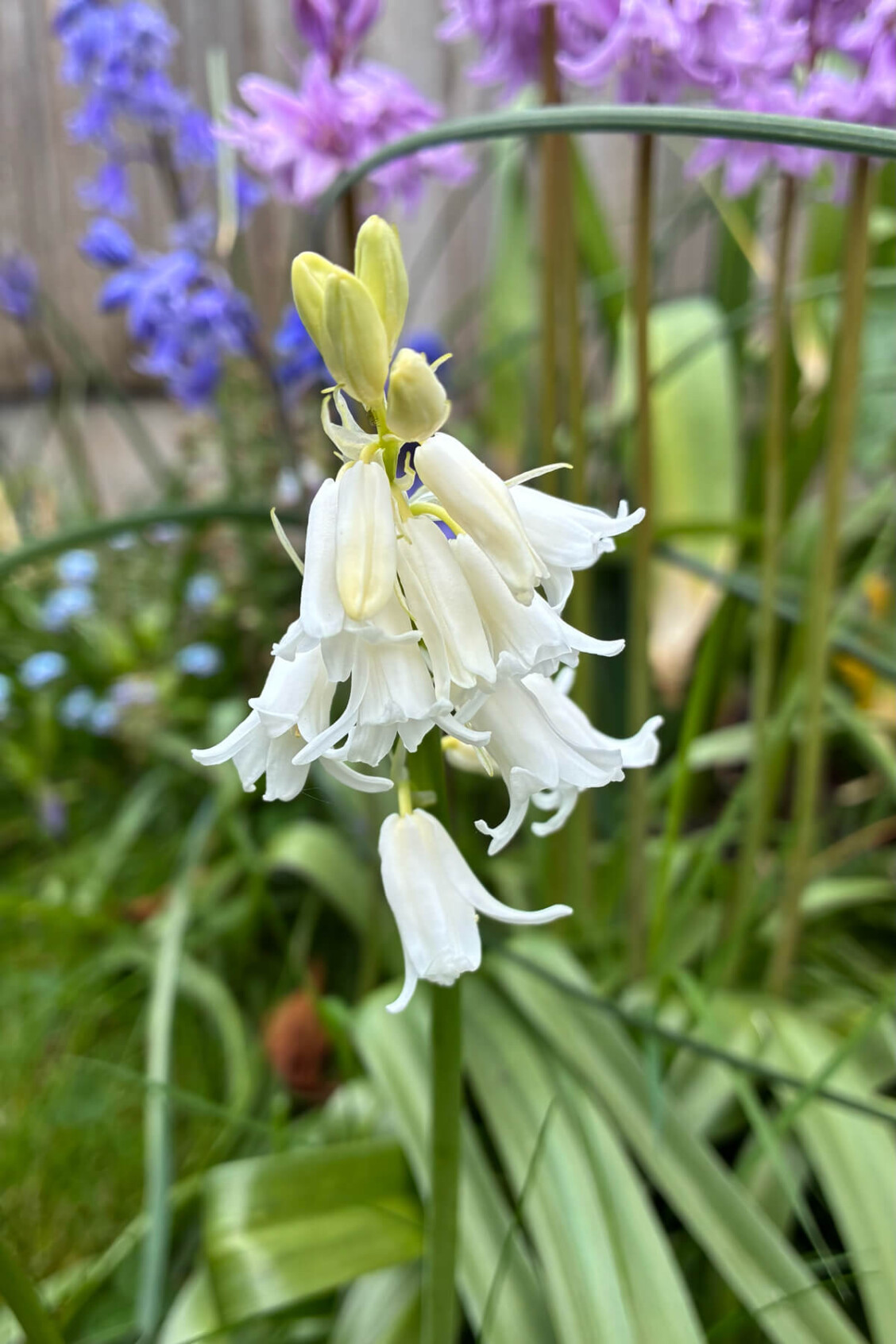
White Spanish Bluebell
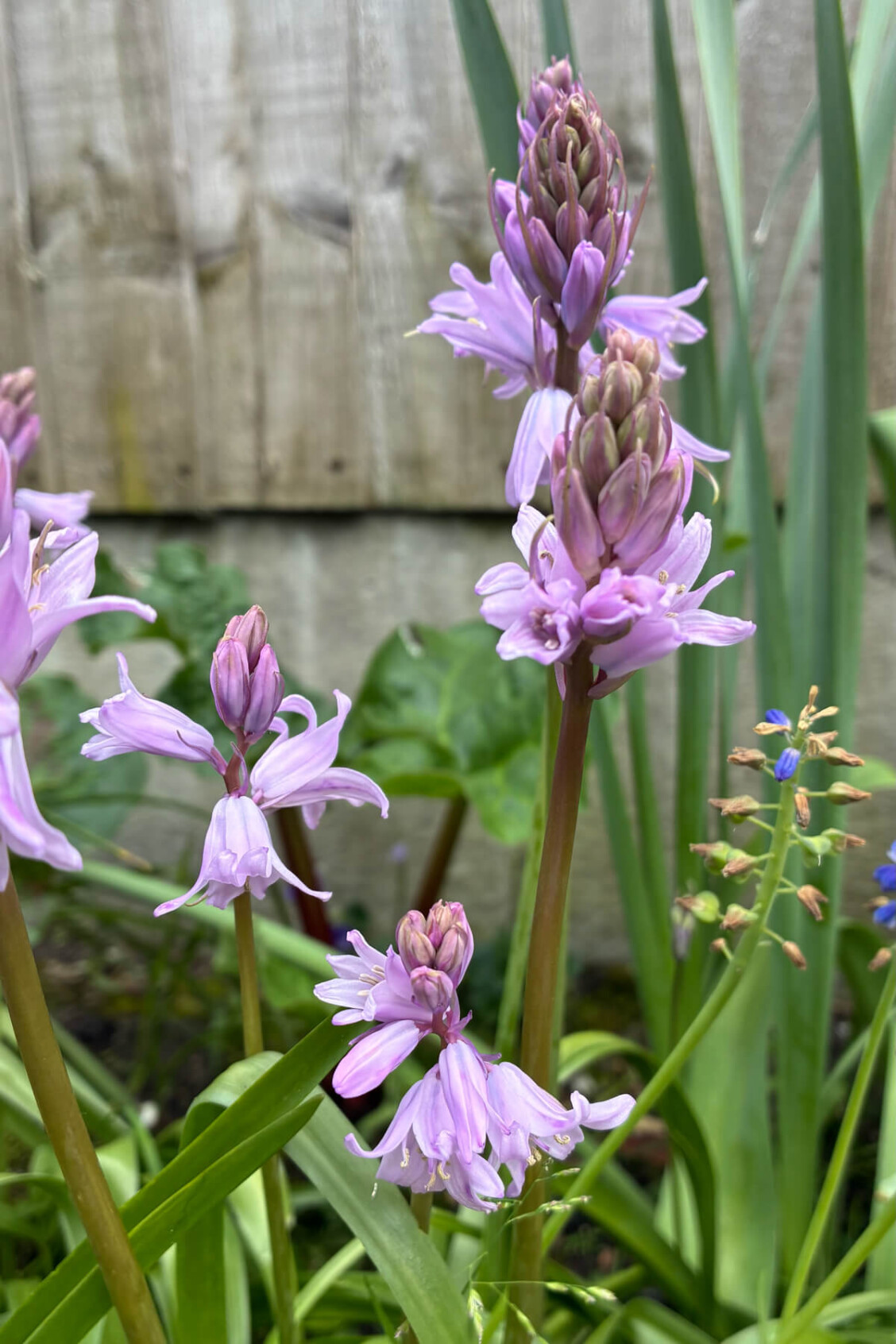
Pink Spanish Bluebell
Love flowers, you may love these articles too. Discover how I weave stories into floral illustrations and surface pattern collections.
Find Your Calm With Sprigs And Stories
If you love slow, thoughtful design and illustration inspired by nature and botanical storytelling, this is where it begins.
Discover behind-the-scenes glimpses, botanical musings, and meaningful design stories. Whether you're a fellow nature lover, a mindful maker, or a brand drawn to soulful storytelling, this is your place to pause, connect, and be inspired. You'll also be the first to know about new projects, offerings, and exclusive studio updates.